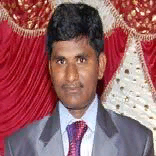
Jaya Krishna Sunkara
Work place: PDCE, Sullurpet, India
E-mail: jayakrishna.s2007@gmail.com
Website:
Research Interests: Comparative Programming Language Analysis, Programming Language Theory, Image Processing, Computer systems and computational processes
Biography
Jaya Krishna Sunkara received B.Tech in Electronics and communication engineering from GKCE, Jawaharlal Nehru Technological University in 2006 and M.E in Information Technology from Bangalore University in 2009. Since 2009, he is in PDCE, Sullurpet, as an Asst. Prof., in ECE Dept. He stood University first in ME and also qualified in GATE for 5 times, twice in EC and thrice in CS. His research areas include Image Processing and Programming Methodologies.
Author Articles
A New Video Compression Method using DCT/DWT and SPIHT based on Accordion Representation
By Jaya Krishna Sunkara E Navaneethasagari D Pradeep E Naga Chaithanya D Pavani D V Sai Sudheer
DOI: https://doi.org/10.5815/ijigsp.2012.04.04, Pub. Date: 8 May 2012
As a rule, a video signal has high temporal redundancies due to the high correlation between successive frames. This redundancy has not been deflated enough by current video compression techniques. In this paper, we present a new video compression technique which tends to hard exploit the relevant temporal redundancy in the video to improve solidity efficiency with minimum processing complexity. It includes 3D (Three Dimension) to 2D (Three Dimension) transformation of the video that allows exploring the temporal redundancy of the video using 2D transforms and avoiding the computationally demanding motion recompense step. This transformation converts the spatial and temporal correlation of the video signal into a high spatial correlation. Indeed, this technique transforms each group of pictures into one picture eventually with high spatial correlation. SPIHT (Set Partitioning in Hierarchical Trees) exploits the properties of the wavelet-transformed images to increase its efficiency. Thus, the De-correlation of the resulting pictures by the DWT (Discrete Wavelet Transform) makes efficient energy compaction, and therefore produces a high video compression ratio. Many experimental tests had been conducted to prove the technique efficiency especially in high bit rate and with slow motion video.
[...] Read more.Other Articles
Subscribe to receive issue release notifications and newsletters from MECS Press journals